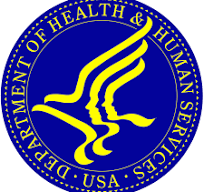Congress Needs to Pass the Pass the Healthy Meals, Healthy Kids Act (H.R.8450) Including Changes to TITLE III—Modernizing WIC
Child Nutrition Reauthorization (including reauthorizing the WIC program) comes up for renewal every five years, but Congress hasn’t reauthorized or updated the provisions and funding in the Act since 2010.
You heard that right. Congress hasn’t updated the statutes or funding in the WIC program since 2010 – thirteen years ago. The current law, the Healthy, Hunger-Free Kids Act of 2010 (Public Law 111-296), expired in 2015.
Child Nutrition Reauthorization Resources | National WIC Association
Ever since then Congress has just been kicking the can down the road and keeping the programs as-is through the annual appropriations process, via something called a continuing resolution – which allows them to continue to work.
However, this means we are 8 years overdue for changes that are needed to make federal child nutrition programs workable – especially WIC. The most urgent needs are to modernize and update WIC benefits and funding to account for increased costs due to inflation.
Federal reimbursement for WIC has gotten so bad that some county health departments are considering dropping their WIC programs. The word on the street is that nobody else will pick up the slack when a county quits because the business case is now upside down in WIC.
How Does WIC Work?
WIC is a federally funded program that supplies important nutritional services and support for eligible pregnant and postpartum individuals and their children until age 5. WIC uses nutritional education, breastfeeding support, nutrition help, and referrals to more services as mechanisms to improve the health of the low-income individuals it serves.
Family income needs to be below 185% of the federal poverty limit in order to qualify (slightly more generous than AZ’s Medicaid participation standard)
WIC money goes to states who further manage the overall program. ADHS mostly distributes the money to the county health departments and federally qualified health centers to implement WIC programming.
Arizona currently has 140 WIC clinics (run by 33 agencies) serving 165,422 individuals.
Funding for WIC flows through the US Department of Agriculture but Congress authorizes the amount. Way back in 2010 congresses’ appropriations covered the costs associated with implementing WIC programs… but that’s no longer the case – mostly because the Act is now 13 years old.
Some states and local clinics may supplement this funding to improve access or more services. The State of Arizona does not, but a couple of counties do.
WIC Participation at a Glance
– 37% of AZ-born infants are on WIC,
– 87% of WIC participants are on AHCCCS (Medicaid),
– 52% of eligible Arizonans (mothers and children) participate in WIC,
– $21,213 average family income,
– $47.7M spent at AZ food retailers.
WIC is Becoming Unsustainable for Counties & FQHCs
WIC clinics (counties, FQHC’s, tribes) get their money based on a formula that includes caseload and food costs into consideration… but the funding formula hasn’t been updated in 13 years.
Staffing costs currently present the biggest challenge to local clinics, especially for clinics with large service areas. Insufficient pay and high workload lead to short staffing.
As a result, short-staffed clinics are unable to spend adequate time with each client or keep up with their caseload. When clinics fall short of their caseload, their funding drops for the next year, causing a cascade.
WIC has a Return on Investment of 3x
The United States has experienced inflation near 40% since 2010, when WIC funding was last adjusted and reauthorized. WIC benefits now have less buying power, lessening the incentive to take part in the program.
Studies suggest that every $1 spent on WIC results in up to a $3.13 reduction in spending for Medicaid programs. This is particularly pertinent given the large overlap between WIC and Medicaid recipients. Reductions in poor health outcomes because of nutrition aid programs such as WIC are also expected to save significant amounts in private healthcare as well.
AzPHA Recommendations
Congress needs to pass the Healthy Meals, Healthy Kids Act (H.R.8450) now. HR 8450 would save WIC by:
- Updating funding formulas to actually cover staffing and administrative costs;
- Modernizing WIC benefits to include online shopping (easier participation); and
- Evaluating effectiveness of telehealth for WIC visits (makes participation easier).


